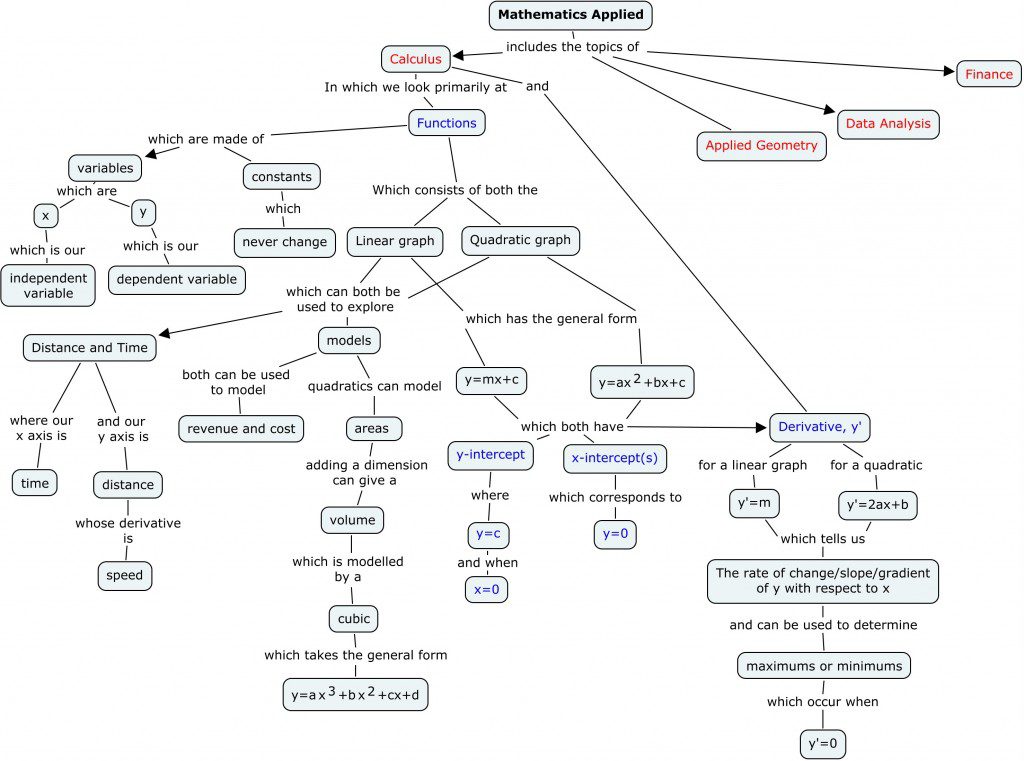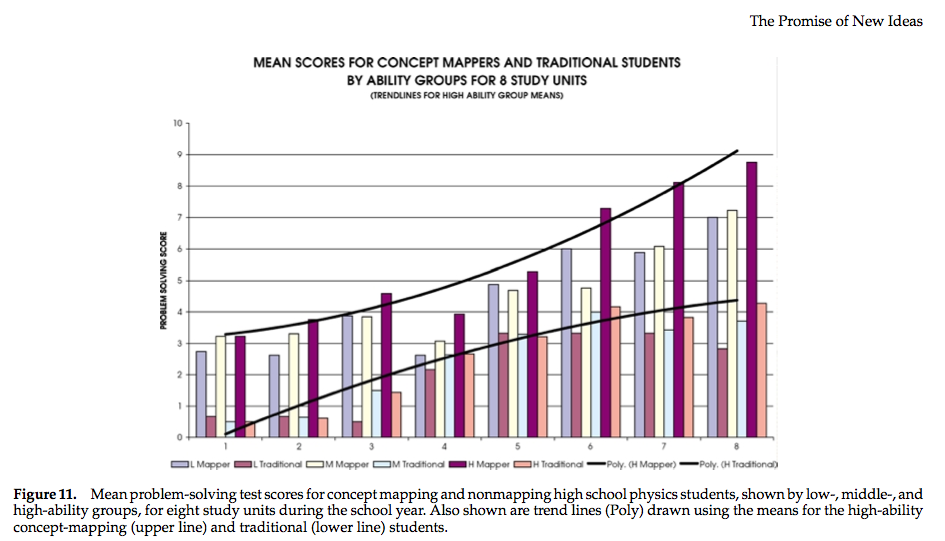This article is part of the ongoing #edupaper series that provides classroom-applicable conclusions sourced from academic papers.
The Conclusion: Encouraging students to build concept maps greatly increases their understanding and problem solving ability. Concept maps can be build using the software Cmap (free) found here: http://cmap.ihmc.us/
EDIT: The two best concept mapping platforms that I have found (I no longer use CMap) are VUE and mindmeister. They are both good for different reasons. Mindmeister is better for quicker maps, but VUE offers a lot more options.
The Paper: Novak, J.D. (2003), “The Promise of New Ideas and New Technology for Improving Teaching and Learning”, Cell Biology Education, Vol. 2, Summer, American Society for Cell Biology, Bethesda, MD, pp. 122-132.
The Details: I often find myself a bit confused. I’ll work through a concept with a student then, to test comprehension, I’ll pose a question that directly relies upon the concept just worked on. I’m surprised at how often the student isn’t able to bring the concept just explained into play in answering the new question. This challenge is exacerbated when the student is in a test situation and has to bring together multiple concepts learnt weeks ago in order to solve a problem.
Could the reason for these challenges be that the student hasn’t yet integrated the new concept in with what they’ve already learnt?
Research from Joseph Novak definitely suggests so. In order to explore the effects of getting students to explicitly explore how concepts fit together, the following study was performed. The study took high school physics students and split them (via a popular intelligence test) into three different achievement groups, low, middle and high. They then took half of each group and taught them physics by standard methods, and for the other half of each group they incorporated student construction of Concept Maps into the curriculum. This required the students to construct maps (like the one shown below) of their course to demonstrate (and aid) their understanding of how the concepts fit together.
This was done for 8 consecutive study units throughout semester. The results are shown below.
Essentially, in all categories (low, medium and high) the students who undertook the concept-map construction exercise outperformed their peers who didn’t and in almost every unit the “low” category students who constructed concept maps outperformed the “high” category students who didn’t*.
If you’re keen to try out concept mapping in the classroom I suggest using the Cmap software which is free and can be found at http://cmap.ihmc.us/. I have experimented with multiple softwares for making concept maps and this is by far the best to date. I was able to put together the concept map found above in approximately 30 minutes using Cmap.
*note: The anomaly (similar performance between Cmapping and non-Cmapping students) at Unit 4 was associated with a switch from kinematics and forces to electricity. It can be seen that the benefits of concept maps increase as students get further into a topic. From units 4 to 8 (all dealing with electricity) show an increase in benefits of concept mapping (upper trendline) as concepts become more complex and integrated whereas those who didn’t concept map see a levelling off of performance (lower trendline) as the greater number of concepts and greater complexity leads to confusion.

